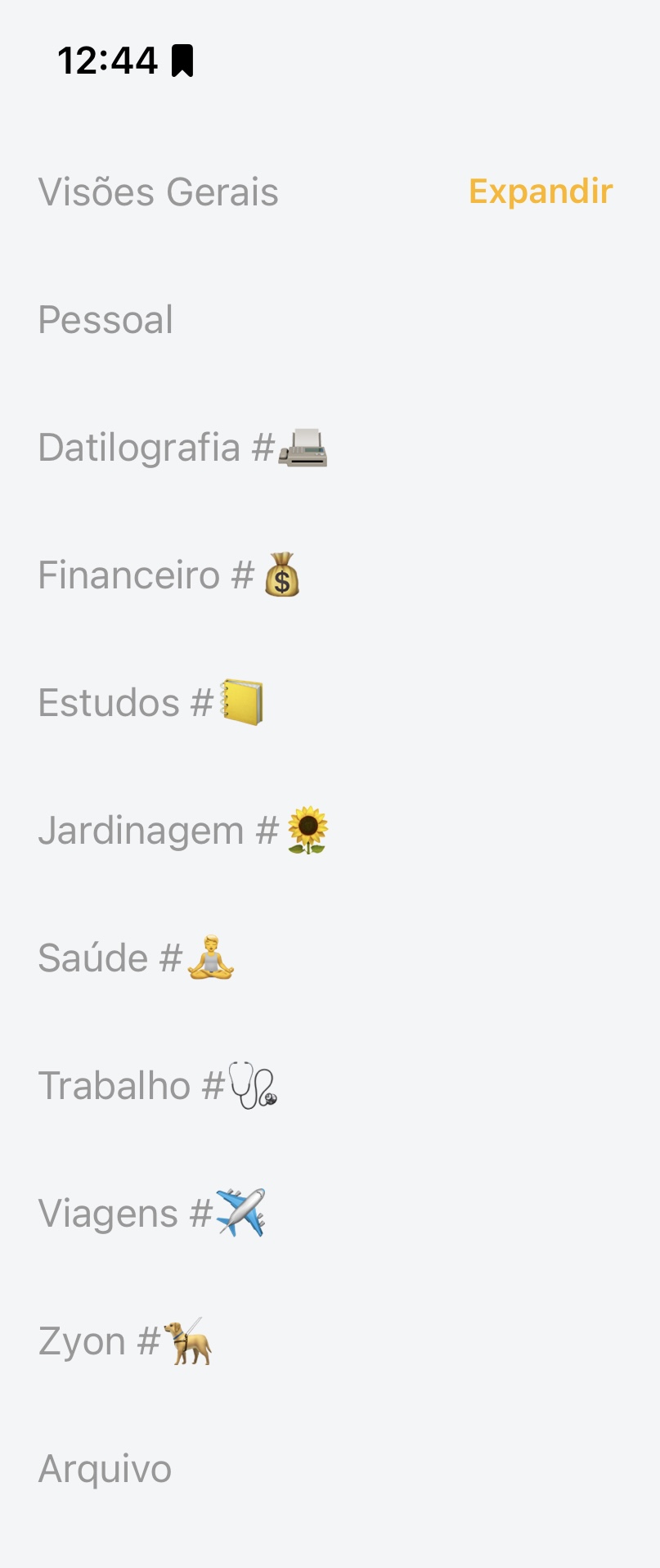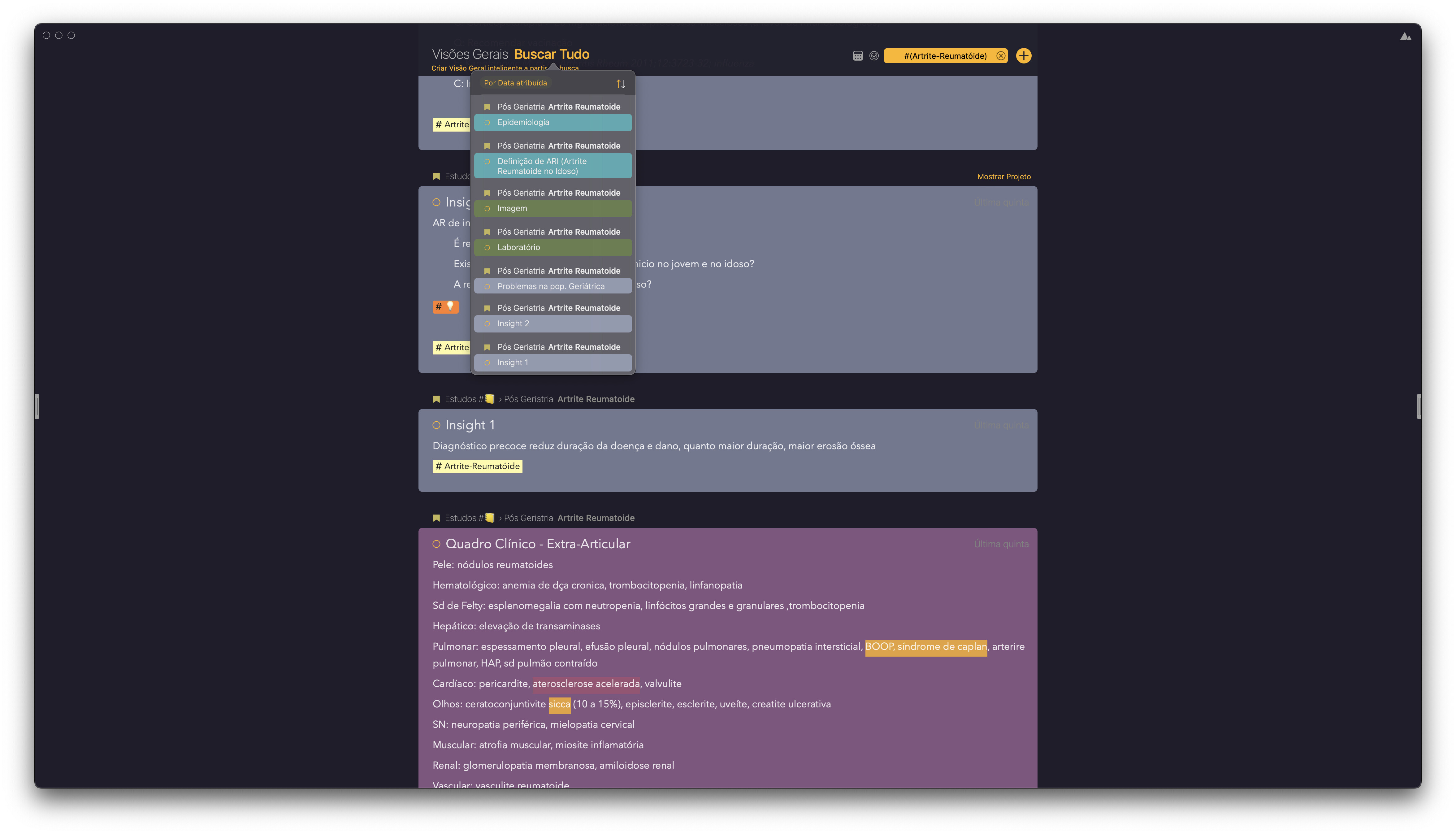Introduction
I’m a physician for 3 years now. During graduation I used different apps to study, but always stumbled upon some issues:
- Multiple sources become a mess
- You easily lose reference to where that information came from
- Note taking apps for iPad such as notability and goodnotes work like a notebook, what means you lose space to add new information related to a subject (same as Niklas Luhmann issue when taking notes for books).
- Assigning content to a calendar event or reminder is not possible with most apps if you use apple calendar and reminders.
Itens 1 to 3 were solved after I discovered the zettelkasten method, but the software was still a limitation.
I found and bought Agenda this year, was using obsidian before, however, it became a mess and didn’t work very well with iPad and iPhone.
I was looking for something that would fit my needs: I enjoy the atomic notes of zettelkasten method, but never managed to implement it very well. I also enjoyed text editing and color coding as a way to find myself, but have you ever seen how highlighting plugins work in obsidian? The text becomes a css mess…
While looking for a replacement, I found Agenda. It is a one-time payment app that gives you support for the next 12 months! Bought it? It is yours forever and you get +12 months of updates. That was also a concerning issue with other apps that require subscription (and my currency is devalued in comparison to dollar)
Notes as Zettelkasten cards
Once I downloaded Agenda I didn’t know how I would organize it for my life and fit it to medical studies. I was kinda into the PARA method by Tiago Forte, but had my own version (in obsidian) of it. I didn’t use folders and instead used hashtags where:
#![]() meant Project, #
meant Project, #![]() meant area, #
meant area, #![]() meant resource and #
meant resource and #![]() meant archive. I wasn’t using it very much tough, because often things would go to resources and areas, since I read multiple stuff during the day that doesn’t relate to projects, and active projects tend to conflict with certain areas so it was quite messy.
meant archive. I wasn’t using it very much tough, because often things would go to resources and areas, since I read multiple stuff during the day that doesn’t relate to projects, and active projects tend to conflict with certain areas so it was quite messy.
For Agenda, I decided to only use PARA’s Areas of my life and Archive. If there is an active project, it would be an area too, set as Agenda categories with a hashtag related to it (I speak portuguese, but emojis are self explanatory):
Alright, that was the first layer of it.
For the second layer, I decided to use Agenda projects as the major sub-topics of it and if it is a very big topic, with, let’s say multiple medical discussions related to its treatment, etc; it would be a sub-category with projects inside.
Now we get to what matters in this discussion: the third layer.
Most stuff in medicine are related to certain diseases, health problems or health-promoting topics. In general they belong to a major medical specialty. I was previously writing my stuff in a single Agenda note inside a major topic project (let’s say, sarcopenia note inside the geriatrics project). Notes were getting heavy, big, and I was losing one feature I didn’t realize before: notes are excellent cards.
They actually look like cards and would be great to bring the atomicity I needed. Now going even further, you can use Agenda 18 to color code your notes and give them color status.
Color coding and hashtags
So I use text styling (and also text coloring) since my childhood. It helped me understand what that note passage meant: the importance of it; if I was not sure what it meant and required further research; if I had that information somewhere else. Agenda 18,as mentioned, brought the option to change the meaning of colors in the color panel. That was the deal breaker to implement a system using hashtags and colors.
Explaining the system
Projects are medical subjects (diseases, etc). In general, a disease has a definition, epidemiology, fisiopathology, clinical manifestations, diagnosis and labs, treatment. I assigned a color to each of these topics: pink means clinical aspects, grey is phisiopatology, green are labs and diagnosis, etc). What do we get with that? I can basically create new information whenever I want, by assigning a color to each card, I can easily understand what it relates to, just need to filter by color:
At the image above, I have filtered by color and looked for the #reumathoid-arthritis. Whenever I add new information, if it is some new treatment or a new guideline, I can add a color and the hashtag. It will appear there.
I also use hashtags as status (generally emoji hashtags). #![]() means I need to research more about it, #
means I need to research more about it, #![]() means that note had been pretty important and I’m camping on it. #
means that note had been pretty important and I’m camping on it. #![]() means I’m using it a lot, but need to learn more.
means I’m using it a lot, but need to learn more.
Liquidtext as a pdf reader and referencing software
I don’t want to extend myself anymore, but in order to know where the information comes from I just grab links from the liquidtext pdf source and add it to the card. I tend to use liquidtext for studying and make mind maps, but that is another topic. Still formatting these notes above and looking for the ref material (because I got it from a lesson) but it is the first subject I decided to color code and am happy for it!

